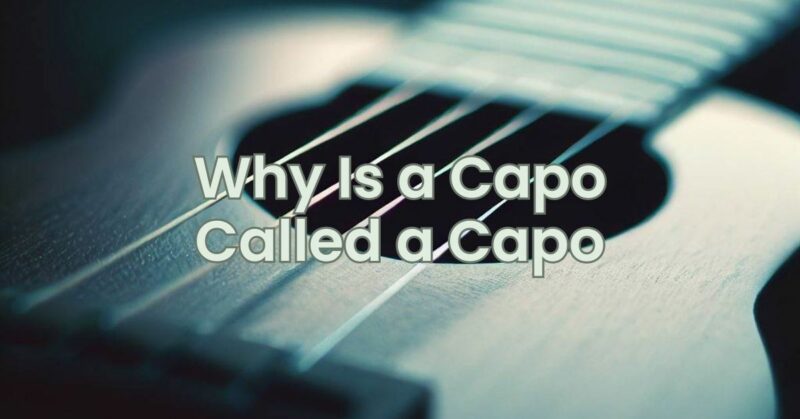The capo is a widely used accessory by guitarists around the world, allowing them to easily change the pitch and key of their instrument. But have you ever wondered why this handy device is called a capo? In this article, we will explore the origin of the term “capo” and delve into its etymology. By uncovering the historical roots of this term, we can gain a deeper understanding of the device and its significance in the world of music.
- Italian Origin: The term “capo” finds its roots in the Italian language. In Italian, “capo” translates to “head” or “chief.” The use of the term in the context of a guitar accessory likely comes from its original function, which is to cover or clamp the strings at a specific fret on the neck of the guitar.
- Function as a “Head” or “Chief”: The capo acts as a movable bar that rests across the guitar neck, exerting pressure on the strings and effectively shortening the playable length of the strings beyond the capo. It serves as a “head” or “chief” of sorts, taking control over the pitch and key of the instrument by effectively changing the starting point of the fretboard.
- Historical Evolution: The concept of using a capo-like device on stringed instruments dates back centuries. In early guitar-like instruments, a variety of tools, including pencils, rubber bands, or even the players’ fingers, were used to press down the strings at a specific fret. As this technique evolved, dedicated capo devices were developed, adopting the term “capo” to describe their purpose and function.
- Alternative Names: While the term “capo” is widely used and recognized, it’s worth noting that other names have been used to refer to similar devices. In some regions, the capo is referred to as a “cheater,” “short-cut,” or “clamp.” These terms highlight the capo’s ability to facilitate playing in different keys without requiring complex chord shapes or transpositions.
- Cross-Cultural Influence: The term “capo” has transcended its Italian origins and is now commonly used in various languages around the world. Regardless of the language, the term “capo” is widely understood among musicians, indicating the universal nature and widespread usage of this device.
The term “capo” originated from the Italian language and refers to the capo’s role as a “head” or “chief” in controlling the pitch and key of a guitar. Over time, the term has become widely adopted and understood by musicians across cultures. Understanding the origin of the term “capo” provides insight into the historical development of this versatile accessory and its significance in enabling guitarists to explore different musical possibilities. So, the next time you use a capo on your guitar, you’ll have a deeper appreciation for the etymology behind its name.


